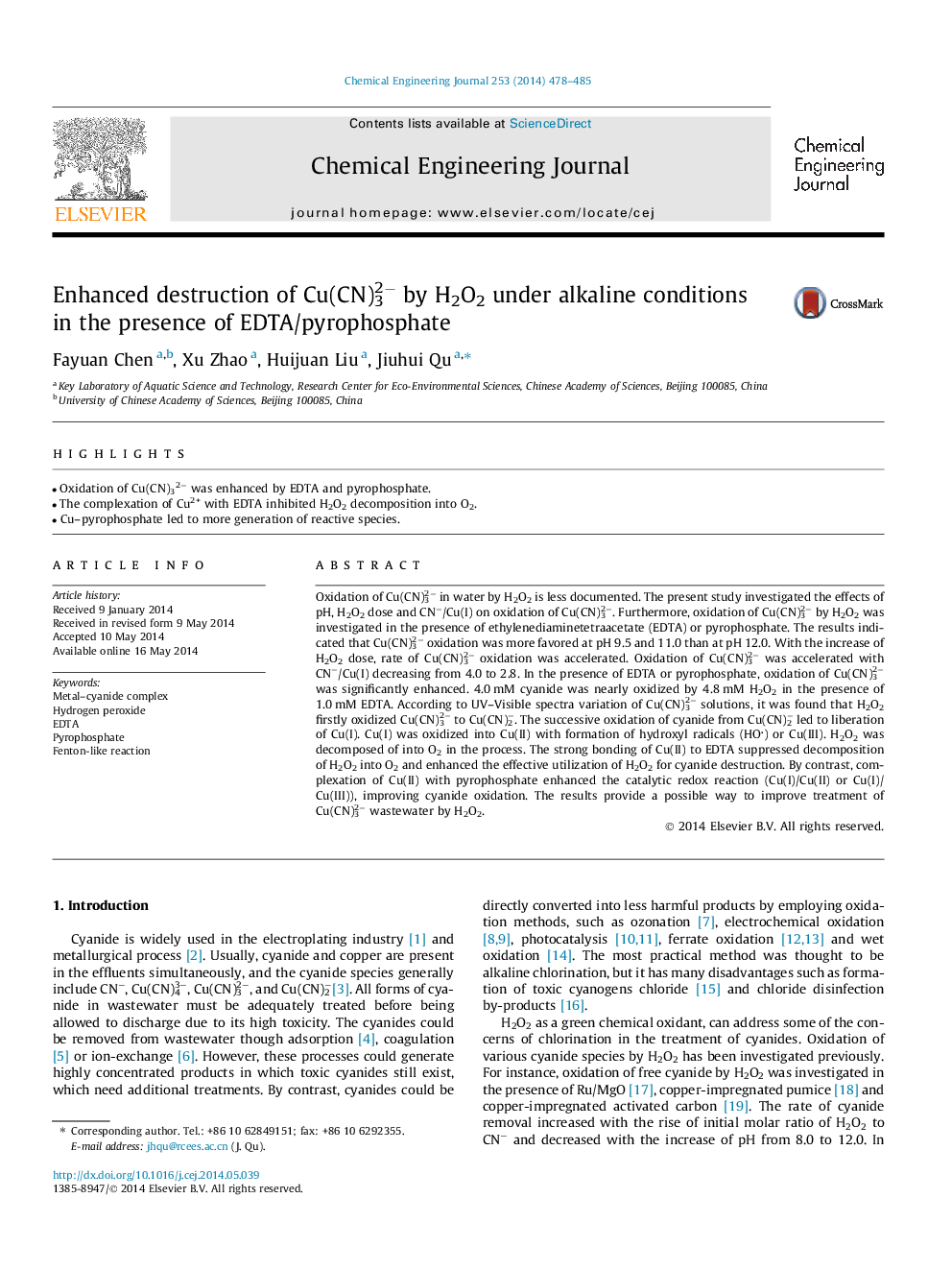| Article ID | Journal | Published Year | Pages | File Type |
|---|---|---|---|---|
| 147206 | Chemical Engineering Journal | 2014 | 8 Pages |
•Oxidation of Cu(CN)32− was enhanced by EDTA and pyrophosphate.•The complexation of Cu2+ with EDTA inhibited H2O2 decomposition into O2.•Cu–pyrophosphate led to more generation of reactive species.
Oxidation of Cu(CN)32− in water by H2O2 is less documented. The present study investigated the effects of pH, H2O2 dose and CN−/Cu(I) on oxidation of Cu(CN)32−. Furthermore, oxidation of Cu(CN)32− by H2O2 was investigated in the presence of ethylenediaminetetraacetate (EDTA) or pyrophosphate. The results indicated that Cu(CN)32− oxidation was more favored at pH 9.5 and 11.0 than at pH 12.0. With the increase of H2O2 dose, rate of Cu(CN)32− oxidation was accelerated. Oxidation of Cu(CN)32− was accelerated with CN−/Cu(I) decreasing from 4.0 to 2.8. In the presence of EDTA or pyrophosphate, oxidation of Cu(CN)32− was significantly enhanced. 4.0 mM cyanide was nearly oxidized by 4.8 mM H2O2 in the presence of 1.0 mM EDTA. According to UV–Visible spectra variation of Cu(CN)32− solutions, it was found that H2O2 firstly oxidized Cu(CN)32− to Cu(CN)2−. The successive oxidation of cyanide from Cu(CN)2− led to liberation of Cu(I). Cu(I) was oxidized into Cu(II) with formation of hydroxyl radicals (HO) or Cu(III). H2O2 was decomposed of into O2 in the process. The strong bonding of Cu(II) to EDTA suppressed decomposition of H2O2 into O2 and enhanced the effective utilization of H2O2 for cyanide destruction. By contrast, complexation of Cu(II) with pyrophosphate enhanced the catalytic redox reaction (Cu(I)/Cu(II) or Cu(I)/Cu(III)), improving cyanide oxidation. The results provide a possible way to improve treatment of Cu(CN)32− wastewater by H2O2.
